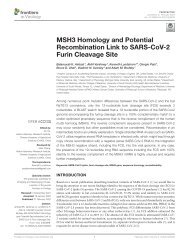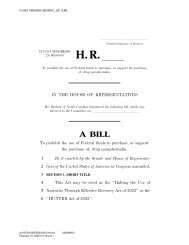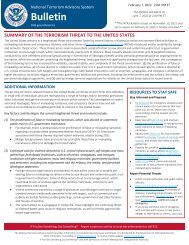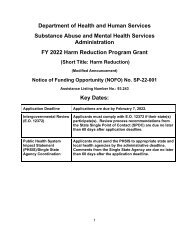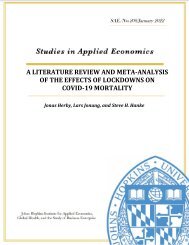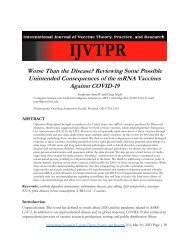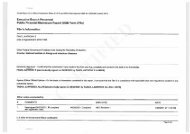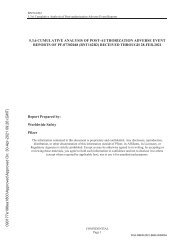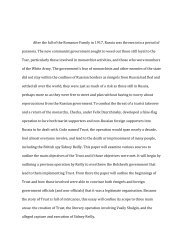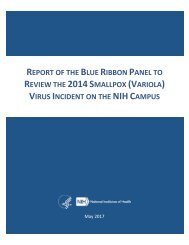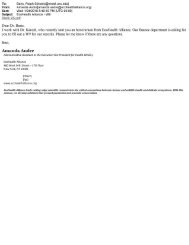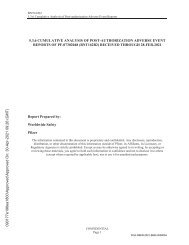SARS–CoV–2 Spike Impairs DNA Damage Repair and Inhibits V(D)J Recombination In Vitro
1 Department of Molecular Biosciences, The Wenner–Gren Institute, Stockholm University, SE-10691 Stockholm, Sweden 2 Department of Clinical Microbiology, Virology, Umeå University, SE-90185 Umeå, Sweden * Authors to whom correspondence should be addressed. Academic Editor: Oliver Schildgen Viruses 2021, 13(10), 2056; https://doi.org/10.3390/v13102056 Received: 20 August 2021 / Revised: 8 September 2021 / Accepted: 8 October 2021 / Published: 13 October 2021 (This article belongs to the Special Issue SARS-CoV-2 Host Cell Interactions)
1
Department of Molecular Biosciences, The Wenner–Gren Institute, Stockholm University, SE-10691 Stockholm, Sweden
2
Department of Clinical Microbiology, Virology, Umeå University, SE-90185 Umeå, Sweden
*
Authors to whom correspondence should be addressed.
Academic Editor: Oliver Schildgen
Viruses 2021, 13(10), 2056; https://doi.org/10.3390/v13102056
Received: 20 August 2021 / Revised: 8 September 2021 / Accepted: 8 October 2021 / Published: 13 October 2021
(This article belongs to the Special Issue SARS-CoV-2 Host Cell Interactions)
You also want an ePaper? Increase the reach of your titles
YUMPU automatically turns print PDFs into web optimized ePapers that Google loves.
viruses<br />
Article<br />
<strong>SARS–CoV–2</strong> <strong>Spike</strong> <strong>Impairs</strong> <strong>DNA</strong> <strong>Damage</strong> <strong>Repair</strong> <strong>and</strong> <strong><strong>In</strong>hibits</strong><br />
V(D)J <strong>Recombination</strong> <strong>In</strong> <strong>Vitro</strong><br />
Hui Jiang 1,2, * <strong>and</strong> Ya-Fang Mei 2, *<br />
1 Department of Molecular Biosciences, The Wenner–Gren <strong>In</strong>stitute, Stockholm University,<br />
SE-10691 Stockholm, Sweden<br />
2 Department of Clinical Microbiology, Virology, Umeå University, SE-90185 Umeå, Sweden<br />
* Correspondence: hui.jiang@su.se (H.J.); ya-fang.mei@umu.se (Y.-F.M.)<br />
Abstract: Severe acute respiratory syndrome coronavirus 2 (<strong>SARS–CoV–2</strong>) has led to the coronavirus<br />
disease 2019 (COVID–19) p<strong>and</strong>emic, severely affecting public health <strong>and</strong> the global economy.<br />
Adaptive immunity plays a crucial role in fighting against <strong>SARS–CoV–2</strong> infection <strong>and</strong> directly influences<br />
the clinical outcomes of patients. Clinical studies have indicated that patients with severe<br />
COVID–19 exhibit delayed <strong>and</strong> weak adaptive immune responses; however, the mechanism by<br />
which <strong>SARS–CoV–2</strong> impedes adaptive immunity remains unclear. Here, by using an in vitro cell line,<br />
we report that the <strong>SARS–CoV–2</strong> spike protein significantly inhibits <strong>DNA</strong> damage repair, which is<br />
required for effective V(D)J recombination in adaptive immunity. Mechanistically, we found that<br />
the spike protein localizes in the nucleus <strong>and</strong> inhibits <strong>DNA</strong> damage repair by impeding key <strong>DNA</strong><br />
repair protein BRCA1 <strong>and</strong> 53BP1 recruitment to the damage site. Our findings reveal a potential<br />
molecular mechanism by which the spike protein might impede adaptive immunity <strong>and</strong> underscore<br />
the potential side effects of full-length spike-based vaccines.<br />
<br />
<br />
Citation: Jiang, H.; Mei, Y.-F.<br />
<strong>SARS–CoV–2</strong> <strong>Spike</strong> <strong>Impairs</strong> <strong>DNA</strong><br />
<strong>Damage</strong> <strong>Repair</strong> <strong>and</strong> <strong><strong>In</strong>hibits</strong> V(D)J<br />
<strong>Recombination</strong> <strong>In</strong> <strong>Vitro</strong>. Viruses 2021,<br />
13, 2056. https://doi.org/10.3390/<br />
v13102056<br />
Academic Editor: Oliver Schildgen<br />
Received: 20 August 2021<br />
Accepted: 8 October 2021<br />
Published: 13 October 2021<br />
Publisher’s Note: MDPI stays neutral<br />
with regard to jurisdictional claims in<br />
published maps <strong>and</strong> institutional affiliations.<br />
Copyright: © 2021 by the authors.<br />
Licensee MDPI, Basel,<br />
Switzerl<strong>and</strong>.<br />
This article is an open access article<br />
distributed under the terms <strong>and</strong><br />
conditions of the Creative Commons<br />
Attribution (CC BY) license (https://<br />
creativecommons.org/licenses/by/<br />
4.0/).<br />
Keywords: <strong>SARS–CoV–2</strong>; spike; <strong>DNA</strong> damage repair; V(D)J recombination; vaccine<br />
1. <strong>In</strong>troduction<br />
Severe acute respiratory syndrome coronavirus 2 (<strong>SARS–CoV–2</strong>) is responsible for<br />
the ongoing coronavirus disease 2019 (COVID–19) p<strong>and</strong>emic that has resulted in more<br />
than 2.3 million deaths. <strong>SARS–CoV–2</strong> is an enveloped single positive–sense RNA virus<br />
that consists of structural <strong>and</strong> non–structural proteins [1]. After infection, these viral<br />
proteins hijack <strong>and</strong> dysregulate the host cellular machinery to replicate, assemble, <strong>and</strong><br />
spread progeny viruses [2]. Recent clinical studies have shown that <strong>SARS–CoV–2</strong> infection<br />
extraordinarily affects lymphocyte number <strong>and</strong> function [3–6]. Compared with mild <strong>and</strong><br />
moderate survivors, patients with severe COVID–19 manifest a significantly lower number<br />
of total T cells, helper T cells, <strong>and</strong> suppressor T cells [3,4]. Additionally, COVID–19 delays<br />
IgG <strong>and</strong> IgM levels after symptom onset [5,6]. Collectively, these clinical observations<br />
suggest that <strong>SARS–CoV–2</strong> affects the adaptive immune system. However, the mechanism<br />
by which <strong>SARS–CoV–2</strong> suppresses adaptive immunity remains unclear.<br />
As two critical host surveillance systems, the immune <strong>and</strong> <strong>DNA</strong> repair systems are<br />
the primary systems that higher organisms rely on for defense against diverse threats <strong>and</strong><br />
tissue homeostasis. Emerging evidence indicates that these two systems are interdependent,<br />
especially during lymphocyte development <strong>and</strong> maturation [7]. As one of the major doublestr<strong>and</strong><br />
<strong>DNA</strong> break (DSB) repair pathways, non-homologous end joining (NHEJ) repair<br />
plays a critical role in lymphocyte–specific recombination–activating gene endonuclease<br />
(RAG) –mediated V(D)J recombination, which results in a highly diverse repertoire of<br />
antibodies in B cell <strong>and</strong> T cell receptors (TCRs) in T cells [8]. For example, loss of function<br />
of key <strong>DNA</strong> repair proteins such as ATM, <strong>DNA</strong>–PKcs, 53BP1, et al., leads to defects<br />
in the NHEJ repair which inhibit the production of functional B <strong>and</strong> T cells, leading to<br />
immunodeficiency [7,9–11]. <strong>In</strong> contrast, viral infection usually induces <strong>DNA</strong> damage via<br />
Viruses 2021, 13, 2056. https://doi.org/10.3390/v13102056<br />
https://www.mdpi.com/journal/viruses
Viruses 2021, 13, 2056 2 of 10<br />
different mechanisms, such as inducing reactive oxygen species (ROS) production <strong>and</strong><br />
host cell replication stress [12–14]. If <strong>DNA</strong> damage cannot be properly repaired, it will<br />
contribute to the amplification of viral infection-induced pathology. Therefore, we aimed to<br />
investigate whether <strong>SARS–CoV–2</strong> proteins hijack the <strong>DNA</strong> damage repair system, thereby<br />
affecting adaptive immunity in vitro.<br />
2. Materials <strong>and</strong> Methods<br />
2.1. Antibodies <strong>and</strong> Reagents<br />
DAPI (Cat #MBD0015), doxorubicin (Cat #D1515), H 2 O 2 (Cat #H1009), <strong>and</strong> β-tubulin<br />
antibodies (Cat #T4026) were purchased from Sigma-Aldrich. Antibodies against His tag<br />
(Cat #12698), H2A (Cat #12349), H2A.X (Cat #7631), γ–H2A.X (Cat #2577), Ku80 (Cat # 2753),<br />
<strong>and</strong> Rad51(Cat #8875) were purchased from Cell Signaling Technology (Danvers, MA, USA).<br />
53BP1(Cat #NB100-304) <strong>and</strong> RNF168 (Cat #H00165918–M01) antibodies were obtained from<br />
Novus Biologicals (Novus Biologicals, Littleton, CO, USA). Lamin B (Cat #sc–374015), ATM<br />
(Cat #sc–135663), <strong>DNA</strong>–PK (Cat #sc–5282), <strong>and</strong> BRCA1(Cat #sc–28383) antibodies were purchased<br />
from Santa Cruz Biotechnology (Santa Cruz, CA, USA). XRCC4 (Cat #PA5–82264)<br />
antibody was purchased from Thermo Fisher Scientific (Waltham, MA, USA).<br />
2.2. Plasmids<br />
pHPRT–DRGFP <strong>and</strong> pCBASceI were kindly gifted by Maria Jasin (Addgene plasmids<br />
#26476 <strong>and</strong> #26477) [15]. pimEJ5GFP was a gift from Jeremy Stark (Addgene plasmid<br />
#44026) [16]. The NSP1, NSP9, NSP13, NSP14, NSP16, spike, <strong>and</strong> nucleocapsid<br />
proteins were first synthesized with codon optimization <strong>and</strong> then cloned into a mammalian<br />
expression vector pUC57 with a C–terminal 6xHis tag. A 12–spacer RSS–GFP<br />
inverted complementary sequence–a 23–spacer RSS was synthesized for the V(D)J reporter<br />
vector. Then, the sequence was cloned into the pBabe–IRES–mRFP vector to<br />
generate the pBabe–12RSS–GFPi–23RSS–IRES–mRFP reporter vector. 12–spacer RSS sequence:<br />
5 ′ –CACAGTGCTACAGACTGGAACAAAAACC–3 ′ . 23–spacer RSS sequence:<br />
5 ′ –CACAGTGGTAGTACTCCACTGTCTGGCTGTACAAAAACC–3 ′ . RAG1 <strong>and</strong> RAG2<br />
expression constructs were generously gifted by Martin Gellert (Addgene plasmid #13328<br />
<strong>and</strong> #13329) [17].<br />
2.3. Cells <strong>and</strong> Cell Culture<br />
HEK293T <strong>and</strong> HEK293 cells obtained from the American Type Culture Collection<br />
(ATCC) were cultured under 5% CO 2 at 37 ◦ C in Dulbecco’s modified Eagle’s medium<br />
(DMEM, high glucose, GlutaMAX) (Life Technologies, Carlsbad, CA, USA) containing 10%<br />
(v/v) fetal calf serum (FCS, Gibco), 1% (v/v) penicillin (100 IU/mL), <strong>and</strong> streptomycin<br />
(100 µg/mL). HEK293T–DR–GFP <strong>and</strong> HEK293T–EJ5–GFP reporter cells were generated as<br />
previously described <strong>and</strong> cultured under 5% CO 2 at 37 ◦ C in the above-mentioned culture<br />
medium.<br />
2.4. HR <strong>and</strong> NHEJ Reporter Assays<br />
HR <strong>and</strong> NHEJ repair in HEK293T cells were measured as described previously<br />
using DR–GFP <strong>and</strong> EJ5–GFP stable cells. Briefly, 0.5 × 10 6 HEK293T stable reporter<br />
cells were seeded in 6–well plates <strong>and</strong> transfected with 2 µg I–SceI expression plasmid<br />
(pCBASceI) together with <strong>SARS–CoV–2</strong> proteins expression plasmids. Forty–eight hours<br />
post–transfection <strong>and</strong> aspirin treatment, cells were harvested <strong>and</strong> analyzed by flow cytometry<br />
analysis for GFP expression. The means were obtained from three independent<br />
experiments.<br />
2.5. Cellular Fractionation <strong>and</strong> Immunoblotting<br />
For the cellular fraction assay, the Subcellular Protein Fractionation Kit (Thermo Fisher)<br />
was used according to the manufacturer’s instructions. Protein lysates were quantified using<br />
the BCA reagent (Thermo Fisher Scientific, Rockford, IL, USA). Proteins were resolved
Viruses 2021, 13, 2056 3 of 10<br />
by sodium dodecyl sulfate–polyacrylamide gel electrophoresis (SDS–PAGE), transferred to<br />
nitrocellulose membranes (Amersham protran, 0.45 µm NC), <strong>and</strong> immunoblotted with specific<br />
primary antibodies followed by HRP–conjugated secondary antibodies. Protein b<strong>and</strong>s<br />
were detected using SuperSignal West Pico or Femto Chemiluminescence kit (Thermo<br />
Fisher Scientific).<br />
2.6. Comet Assay<br />
Cells were treated with different <strong>DNA</strong> damage reagents <strong>and</strong> then harvested at the<br />
indicated time points for analysis. Cells (1 × 10 5 cells/mL in cold phosphate-buffered<br />
saline [PBS]) were resuspended in 1% low–melting agarose at 40 ◦ C at a ratio of 1:3 vol/vol<br />
<strong>and</strong> pipetted onto a CometSlide. Slides were then immersed in prechilled lysis buffer<br />
(1.2 M NaCl, 100 mM EDTA, 0.1% sodium lauryl sarcosinate, 0.26 M NaOH pH > 13) for<br />
overnight (18–20 h) lysis at 4 ◦ C in the dark. Slides were then carefully removed <strong>and</strong><br />
submerged in rinse buffer (0.03 M NaOH <strong>and</strong> 2 mM EDTA, pH > 12) at room temperature<br />
(RT) for 20 min in the dark. This washing step was repeated twice. The slides were<br />
transferred to a horizontal electrophoresis chamber containing rinse buffer <strong>and</strong> separated<br />
for 25 min at a voltage of 0.6 V/cm. Finally, the slides were washed with distilled water,<br />
stained with 10 µg/mL propidium iodide, <strong>and</strong> analyzed by fluorescence microscopy.<br />
Twenty fields with approximately 100 cells in each sample were evaluated <strong>and</strong> quantified<br />
using the Fiji software to determine the tail length (tail moment).<br />
2.7. Immunofluorescence<br />
Cells were seeded on glass coverslips in a 12–well plate <strong>and</strong> transfected with the<br />
indicated plasmid for 24 h. Then, the cells were treated with or without <strong>DNA</strong> damage<br />
reagents according to the experimental setup. The cells were fixed in 4% paraformaldehyde<br />
(PFA) in PBS for 20 min at RT <strong>and</strong> then permeabilized in 0.5% Triton X–100 for 10 min.<br />
Slides were blocked in 5% normal goat serum (NGS) <strong>and</strong> incubated with primary antibodies<br />
diluted in 1% NGS overnight at 4 ◦ C. Samples were then incubated with the indicated<br />
secondary antibodies labeled with Alexa Fluor 488 or 555 (<strong>In</strong>vitrogen) diluted in 1% NGS<br />
at RT for 1 h. Thereafter, they were stained with DAPI for 15 min at RT. Coverslips<br />
were mounted using Dako Fluorescence Mounting Medium (Agilent) <strong>and</strong> imaged using a<br />
Nikon confocal microscope (Eclipse C1 Plus). All scoring was performed under blinded<br />
conditions.<br />
2.8. Analysis of V(D)J <strong>Recombination</strong><br />
Briefly, V(D)J reporter plasmid contains inverted-GFP <strong>and</strong> IRES driving continuously<br />
expressed RFP. Continuously expressed RFP is the internal transfection control. After<br />
<strong>Recombination</strong> activation gene1/2 (RAG1/2) co–transfected into the cells, RAG1/2 will<br />
cut the RSS <strong>and</strong> mediated induction of DSBs, if V(D)J recombination occurs, the inverted<br />
GFPs are ligated in positive order by NHEJ repair. Then the cell will express functional<br />
GFP. So, the GFP <strong>and</strong> RFP double positive cells are the readout of the V(D)J reporter<br />
assay [18]. 293T cells at 70% confluency were transfected with the V(D)J GFP reporter alone<br />
(background) or in combination with RAG1 <strong>and</strong> RAG2 expression constructs, at a ratio of<br />
1 µg V(D)J GFP reporter: 0.5 µg RAG1: 0.5 µg RAG2. The following day, the medium was<br />
changed, <strong>and</strong> after an additional 48 h, cells were harvested <strong>and</strong> analyzed by flow cytometry<br />
for GFP <strong>and</strong> RFP expression.<br />
2.9. Statistical Analysis<br />
All experiments were repeated at least three times using independently collected or<br />
prepared samples. Data were analyzed by Student’s t test or ANOVA followed by Tukey’s<br />
multiple-comparison tests using GraphPad 8.
Viruses 2021, 13, 2056 4 of 10<br />
3. Results<br />
3.1. Effect of Nuclear–Localized <strong>SARS–CoV–2</strong> Viral Proteins on <strong>DNA</strong> <strong>Damage</strong> <strong>Repair</strong><br />
<strong>DNA</strong> damage repair occurs mainly in the nucleus to ensure genome stability. Although<br />
<strong>SARS–CoV–2</strong> proteins are synthesized in the cytosol [1], some viral proteins are<br />
also detectable in the nucleus, including Nsp1, Nsp5, Nsp9, Nsp13, Nsp14, <strong>and</strong> Nsp16 [19].<br />
We investigated whether these nuclear-localized <strong>SARS–CoV–2</strong> proteins affect the host<br />
cell <strong>DNA</strong> damage repair system. For this, we constructed these viral protein expression<br />
plasmids together with spike <strong>and</strong> nucleoprotein expression plasmids, which are generally<br />
considered cytosol–localized proteins. We confirmed their expression <strong>and</strong> localization<br />
by immunoblotting <strong>and</strong> immunofluorescence (Figures 1A <strong>and</strong> S1A). Our results were<br />
consistent with those from previous studies [19]; Nsp1, Nsp5, Nsp9, Nsp13, Nsp14, <strong>and</strong><br />
Nsp16 proteins are indeed localized in the nucleus, <strong>and</strong> nucleoproteins are mainly localized<br />
in the cytosol. Surprisingly, we found the abundance of the spike protein in the nucleus<br />
(Figure 1A). NHEJ repair <strong>and</strong> homologous recombination (HR) repair are two major <strong>DNA</strong><br />
repair pathways that not only continuously monitor <strong>and</strong> ensure genome integrity but are<br />
also vital for adaptive immune cell functions [9]. To evaluate whether these viral proteins<br />
impede the DSB repair pathway, we examined the repair of a site-specific DSB induced by<br />
the I–SceI endonuclease using the direct repeat–green fluorescence protein (DR–GFP) <strong>and</strong><br />
the total-NHEJ-GFP (EJ5–GFP) reporter systems for HR <strong>and</strong> NHEJ, respectively [15,16].<br />
Overexpression of Nsp1, Nsp5, Nsp13, Nsp14, <strong>and</strong> spike proteins diminished the efficiencies<br />
of both HR <strong>and</strong> NHEJ repair (Figures 1B–E <strong>and</strong> S2A,B). Moreover, we also found<br />
that Nsp1, Nsp5, Nsp13, <strong>and</strong> Nsp14 overexpression dramatically suppressed proliferation<br />
compared with other studied proteins (Figure S3A,B). Therefore, the inhibitory effect of<br />
Nsp1, Nsp5, Nsp13, <strong>and</strong> Nsp14 on <strong>DNA</strong> damage repair may be due to secondary effects,<br />
such as growth arrest <strong>and</strong> cell death. <strong>In</strong>terestingly, overexpressed spike protein did not<br />
affect cell morphology or proliferation but significantly suppressed both HR <strong>and</strong> NHEJ<br />
repair (Figures 1B–E, S2A,B <strong>and</strong> S3A,B).<br />
3.2. <strong>SARS–CoV–2</strong> <strong>Spike</strong> Protein <strong><strong>In</strong>hibits</strong> <strong>DNA</strong> <strong>Damage</strong> <strong>Repair</strong><br />
Because spike proteins are critical for mediating viral entry into host cells <strong>and</strong> are<br />
the focus of most vaccine strategies [20,21], we further investigated the role of spike<br />
proteins in <strong>DNA</strong> damage repair <strong>and</strong> its associated V(D)J recombination. <strong>Spike</strong> proteins<br />
are usually thought to be synthesized on the rough endoplasmic reticulum (ER) [1]. After<br />
posttranslational modifications such as glycosylation, spike proteins traffic via the cellular<br />
membrane apparatus together with other viral proteins to form the mature virion [1]. <strong>Spike</strong><br />
protein contains two major subunits, S1 <strong>and</strong> S2, as well as several functional domains or<br />
repeats [22] (Figure 2A). <strong>In</strong> the native state, spike proteins exist as inactive full–length<br />
proteins. During viral infection, host cell proteases such as furin protease activate the S<br />
protein by cleaving it into S1 <strong>and</strong> S2 subunits, which is necessary for viral entry into the<br />
target cell [23]. We further explored different subunits of the spike protein to elucidate<br />
the functional features required for <strong>DNA</strong> repair inhibition. Only the full–length spike<br />
protein strongly inhibited both NHEJ <strong>and</strong> HR repair (Figures 2B–E <strong>and</strong> S4A,B). Next, we<br />
sought to determine whether the spike protein directly contributes to genomic instability<br />
by inhibiting DSB repair. We monitored the levels of DSBs using comet assays. Following<br />
different <strong>DNA</strong> damage treatments, such as γ–irradiation, doxorubicin treatment, <strong>and</strong> H 2 O 2<br />
treatment, there is less repair in the presence of the spike protein (Figure 2F,G). Together,<br />
these data demonstrate that the spike protein directly affects <strong>DNA</strong> repair in the nucleus.
5 of 10<br />
Viruses 2021, 13, 2056 5 of 10<br />
A<br />
Nsp1 Nsp5 Nsp9 Nsp13 Nsp14 Nsp16 <strong>Spike</strong> Nucleocapsid<br />
DAPI<br />
His-tag<br />
Merge<br />
B<br />
D<br />
C<br />
NHEJ efficiency (%)<br />
150<br />
100<br />
50<br />
0<br />
E.V<br />
Nsp1<br />
********<br />
**<br />
****<br />
Nsp5<br />
Nsp9<br />
Nsp13<br />
Nsp14<br />
Nsp16<br />
****<br />
<strong>Spike</strong><br />
Nucleocapsid<br />
E<br />
HR efficiency (%)<br />
150<br />
100<br />
50<br />
0<br />
E.V<br />
Nsp1<br />
***<br />
*** *** ****<br />
Nsp5<br />
Nsp9<br />
Nsp13<br />
Nsp14<br />
Nsp16<br />
<strong>Spike</strong><br />
Nucleocapsid<br />
Figure 1. Effect of severe acute respiratory syndrome coronavirus 2 (<strong>SARS–CoV–2</strong>) nuclear-localized proteins on <strong>DNA</strong><br />
damage repair. (A) Subcellular distribution of the <strong>SARS–CoV–2</strong> proteins. Immunofluorescence was performed at 24 h after<br />
transfection of the plasmid expressing the viral proteins into HEK293T cells. Scale bar: 10 µm. (B) Schematic of the EJ5-GFP<br />
reporter used to monitor non-homologous end joining (NHEJ). (C) Effect of empty vector (E.V) <strong>and</strong> <strong>SARS–CoV–2</strong> proteins<br />
on NHEJ <strong>DNA</strong> repair. The values represent the mean ± st<strong>and</strong>ard deviation (SD) from three independent experiments (see<br />
representative FACS plots in Figure S2A). (D) Schematic of the DR-GFP reporter used to monitor homologous recombination<br />
(HR). (E) Effect of E.V <strong>and</strong> <strong>SARS–CoV–2</strong> proteins on HR <strong>DNA</strong> repair. The values represent the mean ± SD from three<br />
independent experiments (see representative FACS plots in Figure S2B). The values represent the mean ± SD, n = 3.<br />
Statistical significance was determined using one-way analysis of variance (ANOVA) in (C,E). ** p < 0.01, *** p < 0.001,<br />
**** p < 0.0001.<br />
Figure 1. Effect of severe acute respiratory syndrome coronavirus 2 (<strong>SARS–CoV–2</strong>) nuclear-localized<br />
proteins on <strong>DNA</strong> damage repair. (A) Subcellular distribution of the <strong>SARS–CoV–2</strong> proteins.<br />
Immunofluorescence was performed at 24 h after transfection of the plasmid expressing the viral<br />
proteins into HEK293T cells. Scale bar: 10 μm. (B) Schematic of the EJ5-GFP reporter used to monitor<br />
non-homologous end joining (NHEJ). (C) Effect of empty vector (E.V) <strong>and</strong> <strong>SARS–CoV–2</strong> proteins on<br />
NHEJ <strong>DNA</strong> repair. The values represent the mean ± st<strong>and</strong>ard deviation (SD) from three independent<br />
experiments (see representative FACS plots in Figure S2A). (D) Schematic of the DR-GFP reporter used<br />
to monitor homologous recombination (HR). (E) Effect of E.V <strong>and</strong> <strong>SARS–CoV–2</strong> proteins on HR <strong>DNA</strong><br />
repair. The values represent the mean ± SD from three independent experiments (see representative<br />
FACS plots in Figure S2B). The values represent the mean ± SD, n = 3. Statistical significance was determined<br />
using one-way analysis of variance (ANOVA) in (C) <strong>and</strong> (E). ** p < 0.01, *** p < 0.001, **** p < 0.0001.<br />
3.2. <strong>SARS–CoV–2</strong> <strong>Spike</strong> Protein <strong><strong>In</strong>hibits</strong> <strong>DNA</strong> <strong>Damage</strong> <strong>Repair</strong><br />
Because spike proteins are critical for mediating viral entry into host cells <strong>and</strong> are the
Viruses 2021, 13, 2056<br />
functional features required for <strong>DNA</strong> repair inhibition. Only the full–length spike protein<br />
strongly inhibited both NHEJ <strong>and</strong> HR repair (Figures 2B–E <strong>and</strong> S4A,B). Next, we sought<br />
to determine whether the spike protein directly contributes to genomic instability by inhibiting<br />
DSB repair. We monitored the levels of DSBs using comet assays. Following different<br />
<strong>DNA</strong> damage treatments, such as γ–irradiation, doxorubicin treatment, <strong>and</strong> H2O2<br />
treatment, there is less repair in the presence of the spike protein (Figure 2F,G). Together,<br />
these data demonstrate that the spike protein directly affects <strong>DNA</strong> repair in the nucleus.<br />
6 of 10<br />
Figure2. 2. Severe acute acute respiratory respiratory syndrome syndrome coronavirus coronavirus 2 (<strong>SARS–CoV–2</strong>) 2 (<strong>SARS–CoV–2</strong>) spike protein spike inhibits protein <strong>DNA</strong> inhibits<br />
damage <strong>DNA</strong> damage repair. (A) repair. Schematic (A) of Schematic the primary of structure the primary of the <strong>SARS–CoV–2</strong> structure of spike theprotein. <strong>SARS–CoV–2</strong> The S1 subunit spike protein.<br />
includes an N–terminal domain (NTD, 14–305 residues) <strong>and</strong> a receptor–binding domain (RBD, 319–541<br />
The S1 subunit includes an N–terminal domain (NTD, 14–305 residues) <strong>and</strong> a receptor–binding<br />
residues). The S2 subunit consists of the fusion peptide (FP, 788–806 residues), heptapeptide repeat sequence<br />
domain 1 (HR1, (RBD, 912–984 319–541 residues), residues). HR2 The (1163–1213 S2 subunit residues), consists TM domain of the fusion (TM, 1213–1237 peptide residues), (FP, 788–806 <strong>and</strong> residues),<br />
cytoplasm heptapeptide domain repeat (CT,1237–1273 sequenceresidues). 1 (HR1,(B,C) 912–984 Effect residues), of titrated expression HR2 (1163–1213 of the spike residues), protein on TM domain<br />
<strong>DNA</strong> (TM, repair 1213–1237 in HEK–293T residues), cells. (D,E) <strong>and</strong> cytoplasm Only full-length domain spike protein (CT,1237–1273 inhibits non-homologous residues). (B,C) end Effect joining of titrated<br />
(NHEJ) <strong>and</strong> homologous recombination (HR) <strong>DNA</strong> repair. The values represent the mean ± SD from<br />
expression of the spike protein on <strong>DNA</strong> repair in HEK–293T cells. (D,E) Only full-length spike protein<br />
three independent experiments (see representative FACS plots in Figure S4A,B). (F) Full–length spike (S–<br />
FL) inhibits protein–transfected non-homologous HEK293T endcells joining exhibited (NHEJ) more <strong>and</strong> <strong>DNA</strong> homologous damage than empty recombination vector-, S1–, (HR) <strong>and</strong> S2– <strong>DNA</strong> repair.<br />
transfected The values cells represent under different the mean <strong>DNA</strong> ± damage SD fromconditions. three independent For doxorubicin: experiments 4 μg/mL, 2 (see h. For representative γ–irradiation:<br />
plots10 inGy, Figure 30 min. S4A,B). For H2O2: (F) 100 Full–length μM, 1 h. Scale spike bar: (S–FL) 50 μm. protein–transfected (G) Corresponding quantification HEK293T of cells the exhibited<br />
FACS<br />
comet tail moments from 20 different fields with n > 200 comets of three independent experiments. Statistical<br />
significance was assessed using a two-way analysis of variance (ANOVA). NS (Not Significant): *<br />
more <strong>DNA</strong> damage than empty vector-, S1–, <strong>and</strong> S2–transfected cells under different <strong>DNA</strong> damage<br />
p<br />
conditions.<br />
> 0.05, ** p <<br />
For<br />
0.01,<br />
doxorubicin:<br />
*** p < 0.001, ****<br />
4<br />
p<br />
µg/mL,<br />
< 0.0001.<br />
2 h. For γ–irradiation: 10 Gy, 30 min. For H 2 O 2 : 100 µM, 1 h.<br />
Scale bar: 50 µm. (G) Corresponding quantification of the comet tail moments from 20 different fields<br />
with n > 200 comets of three independent experiments. Statistical significance was assessed using<br />
a two-way analysis of variance (ANOVA). NS (Not Significant): * p > 0.05, ** p < 0.01, *** p < 0.001,<br />
**** p < 0.0001.<br />
3.3. <strong>Spike</strong> Proteins Impede the Recruitment of <strong>DNA</strong> <strong>Damage</strong> <strong>Repair</strong> Checkpoint Proteins<br />
To confirm the existence of spike protein in the nucleus, we performed subcellular<br />
fraction analysis <strong>and</strong> found that spike proteins are not only enriched in the cellular membrane<br />
fraction but are also abundant in the nuclear fraction, with detectable expression<br />
even in the chromatin–bound fraction (Figure 3A). We also observed that the spike has<br />
three different forms, the higher b<strong>and</strong> is a highly glycosylated spike, the middle one is a<br />
full–length spike, <strong>and</strong> the lower one is a cleaved spike subunit. Consistent with the comet<br />
assay, we also found the upregulation of the <strong>DNA</strong> damage marker, γ–H2A.X, in spike
3.3. <strong>Spike</strong> Proteins Impede the Recruitment of <strong>DNA</strong> <strong>Damage</strong> <strong>Repair</strong> Checkpoint Proteins<br />
To confirm the existence of spike protein in the nucleus, we performed subcellular<br />
fraction analysis <strong>and</strong> found that spike proteins are not only enriched in the cellular membrane<br />
Viruses 2021, 13, 2056<br />
fraction but are also abundant in the nuclear fraction, with detectable expression<br />
even in the chromatin–bound fraction (Figure 3A). We also observed that the spike has<br />
7 of 10<br />
three different forms, the higher b<strong>and</strong> is a highly glycosylated spike, the middle one is a<br />
full–length spike, <strong>and</strong> the lower one is a cleaved spike subunit. Consistent with the comet<br />
assay, we also found the upregulation of the <strong>DNA</strong> damage marker, γ–H2A.X, in spike<br />
protein–overexpressed cells under <strong>DNA</strong> damage conditions (Figure 3B). A recent study<br />
protein–overexpressed cells under <strong>DNA</strong> damage conditions (Figure 3B). A recent study<br />
suggested<br />
suggested that<br />
that<br />
spike<br />
spike<br />
proteins<br />
proteins<br />
induce<br />
induce<br />
ER<br />
ER<br />
stress<br />
stress<br />
<strong>and</strong><br />
<strong>and</strong><br />
ER–associated<br />
ER–associated<br />
protein<br />
protein<br />
degradation<br />
degradation [24].<br />
To [24]. exclude To exclude the possibility the possibility that that the the spike spike protein protein inhibits <strong>DNA</strong> repair repairby bypromoting<br />
<strong>DNA</strong><br />
repair <strong>DNA</strong> repair protein protein degradation, degradation, we we checked the expression of ofsome some essential essential <strong>DNA</strong> <strong>DNA</strong> repair repair pro-<br />
proteins in NHEJ <strong>and</strong> HR repair pathways <strong>and</strong> <strong>and</strong> found found that that these these <strong>DNA</strong> repair <strong>DNA</strong> proteins repair proteins were were<br />
stable after spike protein overexpression (Figure (Figure 3C). To 3C). determine To determine how the how spike the protein spike protein<br />
inhibits both NHEJ <strong>and</strong> <strong>and</strong> HR HR repair repair pathways, we analyzed we analyzed the recruitment the recruitment of BRCA1 of<strong>and</strong><br />
BRCA1 <strong>and</strong><br />
53BP1, which are are the the key key checkpoint proteins proteins for HR for<strong>and</strong> HRNHEJ <strong>and</strong> NHEJ repair, respectively. repair, respectively. We We<br />
found that the thespike spike protein protein markedly markedly inhibited inhibited both both BRCA1 BRCA1 <strong>and</strong> 53BP1 <strong>and</strong> foci 53BP1 formation foci formation<br />
(Figure 3D–G). Together, Together, these these data data show show that that the <strong>SARS–CoV–2</strong> the <strong>SARS–CoV–2</strong> full–length full–length spike protein spike protein<br />
inhibits <strong>DNA</strong> damage repair by hindering <strong>DNA</strong> repair protein recruitment.<br />
inhibits <strong>DNA</strong> damage repair by hindering <strong>DNA</strong> repair protein recruitment.<br />
A<br />
B<br />
C<br />
<strong>Spike</strong> overexpression<br />
kDa<br />
170<br />
130<br />
95<br />
15<br />
55<br />
70<br />
MF CF SNFCBF<br />
IR<br />
kDa<br />
<strong>Spike</strong><br />
(His tag) 170<br />
130<br />
H2A 95<br />
15<br />
Tubulin<br />
Lamin B 15<br />
E.V <strong>Spike</strong><br />
- + - +<br />
<strong>Spike</strong><br />
(His tag)<br />
γH2AX<br />
H2AX<br />
Relative γH2A.X intensity<br />
(γH2A.X/H2A.X)<br />
2.0<br />
1.5<br />
1.0<br />
0.5<br />
0.0<br />
****<br />
E.V <strong>Spike</strong><br />
IR<br />
kDa<br />
170<br />
170<br />
170<br />
70<br />
43<br />
55<br />
95<br />
70<br />
0 1 2<br />
(μg)<br />
ATM<br />
<strong>DNA</strong>PK<br />
53BP1<br />
RNF168<br />
Rad51<br />
XRCC4<br />
Ku80<br />
170<br />
130<br />
His tag<br />
(<strong>Spike</strong>)<br />
D<br />
DAPI His-tag 53BP1 Merge<br />
E<br />
E.V<br />
<strong>Spike</strong><br />
Average 53BP1 foci /Cell<br />
50 ****<br />
40<br />
30<br />
20<br />
10<br />
0<br />
E.V S-FL<br />
F<br />
DAPI His-tag BRCA1 Merge<br />
G<br />
E.V<br />
<strong>Spike</strong><br />
Average BRCA1 foci /Cell<br />
40<br />
30<br />
20<br />
10<br />
0<br />
E.V<br />
****<br />
S-FL<br />
Figure 3. 3. Severe acute acute respiratory respiratory syndrome syndrome coronavirus coronavirus 2 (<strong>SARS–CoV–2</strong>) 2 (<strong>SARS–CoV–2</strong>) spike protein spike impedes protein the impedes<br />
the recruitment of <strong>DNA</strong> ofdamage <strong>DNA</strong> damage repair checkpoint repair checkpoint proteins. (A) proteins. Membrane (A) fraction Membrane (MF), cytosolic fraction fraction (MF), cytosolic<br />
fraction (CF), soluble (CF), nuclear soluble fraction nuclear (SNF), fraction <strong>and</strong> chromatin-bound (SNF), <strong>and</strong> chromatin-bound fraction (CBF) from fraction HEK293T (CBF) cells from transfected HEK293T cells<br />
with <strong>SARS–CoV–2</strong> spike protein were immunoblotted for His-tag spike <strong>and</strong> indicated proteins. (B) Left:<br />
transfected with <strong>SARS–CoV–2</strong> spike protein were immunoblotted for His-tag spike <strong>and</strong> indicated<br />
Immunoblots of <strong>DNA</strong> damage marker γH2AX in empty vector (E.V)– <strong>and</strong> spike protein–expressing<br />
proteins. HEK293T cells (B) Left: after 10 Immunoblots Gy γ-irradiation. of Right: <strong>DNA</strong>corresponding damage marker quantification γH2AX in of immunoblots empty vector in (E.V)– left. The <strong>and</strong> spike<br />
protein–expressing values represent the mean HEK293T ± SD (n = cells 3). Statistical after 10significance Gy γ-irradiation. was determined Right: using corresponding Student’s t–test. quantification **** of<br />
immunoblots in left. The values represent the mean ± SD (n = 3). Statistical significance was determined<br />
using Student’s t-test. **** p < 0.0001. (C) Immunoblots of <strong>DNA</strong> damage repair related proteins<br />
in spike protein–expressing HEK293T cells. (D) Representative images of 53BP1 foci formation in<br />
E.V– <strong>and</strong> spike protein-expressing HEK293 cells exposed to 10 Gy γ–irradiation. Scale bar: 10 µm.<br />
(E) Quantitative analysis of 53BP1 foci per nucleus. The values represent the mean ± SEM, n = 50.<br />
(F) BRCA1 foci formation in empty vector- <strong>and</strong> spike protein-expressing HEK293 cells exposed to<br />
10 Gy γ–irradiation. Scale bar: 10 µm. (G). Quantitative analysis of BRCA1 foci per nucleus. The<br />
values represent the mean ± SEM, n = 50. Statistical significance was determined using Student’s<br />
t-test. **** p < 0.0001.
was determined using Student’s t–test. **** p < 0.0001.<br />
3.4. <strong>Spike</strong> Protein <strong>Impairs</strong> V(D)J <strong>Recombination</strong> <strong>In</strong> vitro<br />
<strong>DNA</strong> damage repair, especially NHEJ repair, is essential for V(D)J recombination,<br />
which lies at the core of B <strong>and</strong> T cell immunity [9]. To date, many approved SARS–CoV–<br />
2 vaccines, such as mRNA vaccines <strong>and</strong> adenovirus–COVID–19 vaccines, have been developed<br />
based on the full–length spike protein [25]. Although it is debatable whether<br />
3.4. <strong>Spike</strong> Protein <strong>Impairs</strong> V(D)J <strong>Recombination</strong> <strong>In</strong> vitro<br />
<strong>SARS–CoV–2</strong> directly infects lymphocyte precursors [26,27], some reports have shown<br />
that infected cells secrete exosomes that can deliver <strong>SARS–CoV–2</strong> RNA or protein to target<br />
cells [28,29]. We further tested whether the spike protein reduced NHEJ–mediated V(D)J<br />
recombination. For this, we designed an in vitro V(D)J recombination reporter system according<br />
to a previous study [18] (Figure S5). Compared with the empty vector, spike protein<br />
overexpression inhibited RAG–mediated V(D)J recombination in this in vitro reporter<br />
system (Figure 4).<br />
Viruses 2021, 13, 2056 8 of 10<br />
<strong>DNA</strong> damage repair, especially NHEJ repair, is essential for V(D)J recombination,<br />
which lies at the core of B <strong>and</strong> T cell immunity [9]. To date, many approved SARS–<br />
CoV–2 vaccines, such as mRNA vaccines <strong>and</strong> adenovirus–COVID–19 vaccines, have been<br />
developed based on the full–length spike protein [25]. Although it is debatable whether<br />
<strong>SARS–CoV–2</strong> directly infects lymphocyte precursors [26,27], some reports have shown<br />
that infected cells secrete exosomes that can deliver <strong>SARS–CoV–2</strong> RNA or protein to<br />
target cells [28,29]. We further tested whether the spike protein reduced NHEJ–mediated<br />
V(D)J recombination. For this, we designed an in vitro V(D)J recombination reporter<br />
system according to a previous study [18] (Figure S5). Compared with the empty vector,<br />
spike protein overexpression inhibited RAG–mediated V(D)J recombination in this in vitro<br />
reporter system (Figure 4).<br />
A<br />
B<br />
C<br />
GFPi, +RAG1/2<br />
12RSS<br />
GFP<br />
GFP<br />
23RSS<br />
IRES<br />
RFP<br />
RAG1/RAG2<br />
12/23RSS<br />
IRES<br />
RFP<br />
GFP<br />
E.V<br />
<strong>Spike</strong><br />
Relative V(D)J recombination<br />
efficiency(%)<br />
150<br />
100<br />
50<br />
0<br />
E.V<br />
****<br />
<strong>Spike</strong><br />
Figure 4. <strong>Spike</strong> protein impairs V(D)J recombination in vitro. (A) Schematic of the V(D)J reporter system. (B) Representative<br />
plots of flow cytometry show that the <strong>SARS–CoV–2</strong> spike protein impedes V(D)J recombination in vitro. (C) Quantitative<br />
analysis of relative V(D)J recombination. The values represent the mean ± SD, n = 3. Statistical significance was determined<br />
using Student’s t-test. **** p < 0.0001.<br />
RFP<br />
Figure 4. <strong>Spike</strong> protein impairs V(D)J recombination in vitro. (A) Schematic of the V(D)J reporter<br />
system. (B) Representative plots of flow cytometry show that the <strong>SARS–CoV–2</strong> spike protein impedes<br />
V(D)J recombination in vitro. (C) Quantitative analysis of relative V(D)J recombination. The values represent<br />
the mean ± SD, 4. Discussion n = 3. Statistical significance was determined using Student’s t–test. **** p < 0.0001.<br />
Our findings provide evidence of the spike protein hijacking the <strong>DNA</strong> damage repair<br />
machinery <strong>and</strong> adaptive immune machinery in vitro. We propose a potential mechanism<br />
4. Discussion<br />
by which spike proteins may impair adaptive immunity by inhibiting <strong>DNA</strong> damage<br />
Our findings<br />
repair.<br />
provide<br />
Although<br />
evidence<br />
no evidence<br />
of the<br />
hasspike been published<br />
protein<br />
that<br />
hijacking<br />
<strong>SARS–CoV–2</strong><br />
the<br />
can<br />
<strong>DNA</strong><br />
infect<br />
damage<br />
thymocytes<br />
repair<br />
machinery <strong>and</strong> adaptive or bone marrow immune lymphoid machinery cells, our in vitro. V(D)J We reporter propose assay a potential shows that mechanism<br />
the spike<br />
by which spike proteins intensely<br />
may impair<br />
impededadaptive V(D)J recombination.<br />
immunity<br />
Consistent<br />
by inhibiting<br />
with our<br />
<strong>DNA</strong><br />
results,<br />
damage<br />
clinical<br />
repair.<br />
Although no<br />
observations also show that the risk of severe illness or death with COVID–19 increases<br />
with<br />
evidence<br />
age, especially<br />
has been<br />
older adults<br />
published<br />
who arethat at the<br />
<strong>SARS–CoV–2</strong><br />
highest risk [22].<br />
can<br />
Thisinfect may bethymocytes<br />
because<br />
or bone marrow <strong>SARS–CoV–2</strong> lymphoid spike cells, proteins our in can vitro weaken V(D)J the <strong>DNA</strong> reporter repairassay systemshows of olderthat people the <strong>and</strong>spike<br />
protein intensely consequently impeded impede V(D)J V(D)J recombination. Consistent <strong>and</strong> adaptive immunity. with our <strong>In</strong>results, contrast, clinical our data observations<br />
also show<br />
provide valuable details on the involvement of spike protein subunits in <strong>DNA</strong> damage<br />
repair,<br />
that<br />
indicating<br />
the risk<br />
that<br />
of<br />
full–length<br />
severe<br />
spike–based<br />
illness or death<br />
vaccineswith may inhibit<br />
COVID–19<br />
the recombination<br />
increases<br />
ofwith<br />
age, especially older V(D)J in adults B cells, who whichare is also at consistent the highest with arisk recent [22]. studyThis that amay full–length be because spike–based SARS–<br />
CoV–2 spike proteins vaccine induced can weaken lower antibody the <strong>DNA</strong> titersrepair compared system to the RBD–based of older people vaccine [28]. <strong>and</strong> This consequently<br />
impede<br />
suggests that the use of antigenic epitopes of the spike as a <strong>SARS–CoV–2</strong> vaccine might be<br />
safer<br />
V(D)J<br />
<strong>and</strong>recombination more efficacious than<br />
<strong>and</strong><br />
theadaptive full–length<br />
immunity.<br />
spike. Taken together,<br />
<strong>In</strong> contrast,<br />
we identified<br />
our data<br />
one ofpro-<br />
vide valuable details the potentially on the involvement important mechanisms of spike of <strong>SARS–CoV–2</strong> protein subunits suppression in <strong>DNA</strong> of thedamage host adaptive repair,<br />
indicating that full–length immune machinery. spike–based Furthermore, vaccines our findings may also inhibit implythe a potential recombination side effect of the V(D)J<br />
in B cells, which is also consistent with a recent study that a full–length spike–based vaccine<br />
induced lower antibody titers compared to the RBD–based vaccine [28]. This suggests
Viruses 2021, 13, 2056 9 of 10<br />
References<br />
full–length spike–based vaccine. This work will improve the underst<strong>and</strong>ing of COVID–19<br />
pathogenesis <strong>and</strong> provide new strategies for designing more efficient <strong>and</strong> safer vaccines.<br />
Supplementary Materials: The following are available online at https://www.mdpi.com/article/<br />
10.3390/v13102056/s1, Figure S1: Expression of nuclear–localized <strong>SARS–CoV–2</strong> proteins in human<br />
cells, Figure S2: Effect of nuclear <strong>SARS–CoV–2</strong> proteins on NHEJ– <strong>and</strong> HR–<strong>DNA</strong> repair pathway,<br />
Figure S3: Nsp1, Nsp5, Nsp13, Nsp14 but not spike inhibit cell proliferation, Figure S4: Effect of<br />
<strong>SARS–CoV–2</strong> spike mutants on NHEJ– <strong>and</strong> HR– <strong>DNA</strong> repair pathway, Figure S5: <strong>In</strong> vitro V(D)J<br />
recombination assay.<br />
Author Contributions: H.J. conceived <strong>and</strong> designed the study. H.J. <strong>and</strong> Y.-F.M. supervised the<br />
study, performed experiments, <strong>and</strong> interpreted the data. Writing—original draft preparation, H.J.;<br />
Writing—review <strong>and</strong> editing, H.J. <strong>and</strong> Y.-F.M.; funding acquisition, Y.-F.M. All authors have read <strong>and</strong><br />
agreed to the published version of the manuscript.<br />
Funding: This work was supported by Umeå University, Medical Faculty’s Planning grants for<br />
COVID–19 (research project number: 3453 16032 to Y.F.M.); the Lion’s Cancer Research Foundation<br />
at Umeå University (grants: LP 17–2153, AMP 19–982, <strong>and</strong> LP 20–2256 to Y.F.M.), <strong>and</strong> the base unit’s<br />
ALF funds for research at academic healthcare units <strong>and</strong> university healthcare units in the northern<br />
healthcare region (ALF–Basenheten: 2019, 2020, 2021 to Y.F.M.).<br />
<strong>In</strong>stitutional Review Board Statement: Not applicable, because of this study not involving humans<br />
or animals.<br />
<strong>In</strong>formed Consent Statement: Not applicable, because of this study not involving humans.<br />
Data Availability Statement: The data presented in this study are available in the main text <strong>and</strong><br />
Supplementary Materials.<br />
Conflicts of <strong>In</strong>terest: The authors have declared that no competing interests exist. The funders<br />
had no role in study design, data collection <strong>and</strong> analysis, decision to publish, or preparation of<br />
the manuscript.<br />
1. V’Kovski, P.; Kratzel, A.; Steiner, S.; Stalder, H.; Thiel, V. Coronavirus biology <strong>and</strong> replication: Implications for SARS-CoV-2. Nat.<br />
Rev. Microbiol. 2021, 19, 155–170. [CrossRef]<br />
2. Suryawanshi, R.K.; Koganti, R.; Agelidis, A.; Patil, C.D.; Shukla, D. Dysregulation of Cell Signaling by SARS-CoV-2. Trends<br />
Microbiol. 2021, 29, 224–237. [CrossRef]<br />
3. Qin, C.; Zhou, L.; Hu, Z.; Zhang, S.; Yang, S.; Tao, Y.; Xie, C.; Ma, K.; Shang, K.; Wang, W.; et al. Dysregulation of Immune<br />
Response in Patients With Coronavirus 2019 (COVID-19) in Wuhan, China. Clin. <strong>In</strong>fect. Dis. 2020, 71, 762–768. [CrossRef]<br />
[PubMed]<br />
4. Wang, F.; Nie, J.; Wang, H.; Zhao, Q.; Xiong, Y.; Deng, L.; Song, S.; Ma, Z.; Mo, P.; Zhang, Y. Characteristics of Peripheral<br />
Lymphocyte Subset Alteration in COVID-19 Pneumonia. J. <strong>In</strong>fect. Dis. 2020, 221, 1762–1769. [CrossRef] [PubMed]<br />
5. Zhang, G.; Nie, S.; Zhang, Z.; Zhang, Z. Longitudinal Change of Severe Acute Respiratory Syndrome Coronavirus 2 Antibodies<br />
in Patients with Coronavirus Disease 2019. J. <strong>In</strong>fect. Dis. 2020, 222, 183–188. [CrossRef] [PubMed]<br />
6. Long, Q.X.; Liu, B.Z.; Deng, H.J.; Wu, G.C.; Deng, K.; Chen, Y.K.; Liao, P.; Qiu, J.F.; Lin, Y.; Cai, X.F.; et al. Antibody responses to<br />
SARS-CoV-2 in patients with COVID-19. Nat. Med. 2020, 26, 845–848. [CrossRef]<br />
7. Bednarski, J.J.; Sleckman, B.P. Lymphocyte development: <strong>In</strong>tegration of <strong>DNA</strong> damage response signaling. Adv. Immunol. 2012,<br />
116, 175–204. [PubMed]<br />
8. Malu, S.; Malshetty, V.; Francis, D.; Cortes, P. Role of non-homologous end joining in V(D)J recombination. Immunol. Res. 2012, 54,<br />
233–246. [CrossRef]<br />
9. Bednarski, J.J.; Sleckman, B.P. At the intersection of <strong>DNA</strong> damage <strong>and</strong> immune responses. Nat. Rev. Immunol. 2019, 19, 231–242.<br />
[CrossRef]<br />
10. Gapud, E.J.; Sleckman, B.P. Unique <strong>and</strong> redundant functions of ATM <strong>and</strong> <strong>DNA</strong>-PKcs during V(D)J recombination. Cell. Cycle<br />
2011, 10, 1928–1935. [CrossRef]<br />
11. Difilippantonio, S.; Gapud, E.; Wong, N.; Huang, C.Y.; Mahowald, G.; Chen, H.T.; Kruhlak, M.J.; Callen, E.; Livak, F.;<br />
Nussenzweig, M.C.; et al. 53BP1 facilitates long-range <strong>DNA</strong> end-joining during V(D)J recombination. Nature 2008, 456, 529–533.<br />
[CrossRef] [PubMed]<br />
12. Schwarz, K.B. Oxidative stress during viral infection: A review. Free Radic. Biol. Med. 1996, 21, 641–649. [CrossRef]
Viruses 2021, 13, 2056 10 of 10<br />
13. Xu, L.H.; Huang, M.; Fang, S.G.; Liu, D.X. Coronavirus infection induces <strong>DNA</strong> replication stress partly through interaction of<br />
its nonstructural protein 13 with the p125 subunit of <strong>DNA</strong> polymerase delta. J. Biol. Chem. 2011, 286, 39546–39559. [CrossRef]<br />
[PubMed]<br />
14. Delgado-Roche, L.; Mesta, F. Oxidative Stress as Key Player in Severe Acute Respiratory Syndrome Coronavirus (SARS-CoV)<br />
<strong>In</strong>fection. Arch. Med. Res. 2020, 51, 384–387. [CrossRef] [PubMed]<br />
15. Pierce, A.J.; Hu, P.; Han, M.; Ellis, N.; Jasin, M. Ku <strong>DNA</strong> end-binding protein modulates homologous repair of double-str<strong>and</strong><br />
breaks in mammalian cells. Genes Dev. 2001, 15, 3237–3242. [CrossRef]<br />
16. Bennardo, N.; Cheng, A.; Huang, N.; Stark, J.M. Alternative-NHEJ is a mechanistically distinct pathway of mammalian<br />
chromosome break repair. PLoS Genet. 2008, 4, e1000110. [CrossRef]<br />
17. Sadofsky, M.J.; Hesse, J.E.; McBlane, J.F.; Gellert, M. Expression <strong>and</strong> V(D)J recombination activity of mutated RAG-1 proteins.<br />
Nucleic Acids Res. 1993, 21, 5644–5650. [CrossRef]<br />
18. Trancoso, I.; Bonnet, M.; Gardner, R.; Carneiro, J.; Barreto, V.; Demengeot, J.; Sarmento, L. A Novel Quantitative Fluorescent<br />
Reporter Assay for RAG Targets <strong>and</strong> RAG Activity. Front. Immunol. 2013, 4, 110. [CrossRef]<br />
19. Zhang, J.; Cruz-cosme, R.; Zhuang, M.-W.; Liu, D.; Liu, Y.; Teng, S.; Wang, P.-H.; Tang, Q. A systemic <strong>and</strong> molecular study of<br />
subcellular localization of SARS-CoV-2 proteins. Signal Transduct. Target. Ther. 2020, 5, 269. [CrossRef]<br />
20. Shang, J.; Wan, Y.; Luo, C.; Ye, G.; Geng, Q.; Auerbach, A.; Li, F. Cell entry mechanisms of SARS-CoV-2. Proc. Natl. Acad. Sci. USA<br />
2020, 117, 11727–11734. [CrossRef]<br />
21. Du, L.; He, Y.; Zhou, Y.; Liu, S.; Zheng, B.J.; Jiang, S. The spike protein of SARS-CoV—A target for vaccine <strong>and</strong> therapeutic<br />
development. Nat. Rev. Microbiol. 2009, 7, 226–236. [CrossRef] [PubMed]<br />
22. Huang, Y.; Yang, C.; Xu, X.F.; Xu, W.; Liu, S.W. Structural <strong>and</strong> functional properties of SARS-CoV-2 spike protein: Potential<br />
antivirus drug development for COVID-19. Acta Pharmacol. Sin. 2020, 41, 1141–1149. [CrossRef] [PubMed]<br />
23. Hoffmann, M.; Kleine-Weber, H.; Schroeder, S.; Kruger, N.; Herrler, T.; Erichsen, S.; Schiergens, T.S.; Herrler, G.; Wu, N.H.;<br />
Nitsche, A.; et al. SARS-CoV-2 Cell Entry Depends on ACE2 <strong>and</strong> TMPRSS2 <strong>and</strong> Is Blocked by a Clinically Proven Protease<br />
<strong>In</strong>hibitor. Cell 2020, 181, 271–280.e8. [CrossRef]<br />
24. Hsu, A.C.-Y.; Wang, G.; Reid, A.T.; Veerati, P.C.; Pathinayake, P.S.; Daly, K.; Mayall, J.R.; Hansbro, P.M.; Horvat, J.C.; Wang, F.;<br />
et al. SARS-CoV-2 <strong>Spike</strong> protein promotes hyper-inflammatory response that can be ameliorated by <strong>Spike</strong>-antagonistic peptide<br />
<strong>and</strong> FDA-approved ER stress <strong>and</strong> MAP kinase inhibitors in vitro. bioRxiv 2020, 2020, 317818.<br />
25. Pol<strong>and</strong>, G.A.; Ovsyannikova, I.G.; Kennedy, R.B. SARS-CoV-2 immunity: Review <strong>and</strong> applications to phase 3 vaccine c<strong>and</strong>idates.<br />
Lancet 2020, 396, 1595–1606. [CrossRef]<br />
26. Davanzo, G.G.; Codo, A.C.; Brunetti, N.S.; Boldrini, V.; Knittel, T.L.; Monterio, L.B.; de Moraes, D.; Ferrari, A.J.R.; de Souza, G.F.;<br />
Muraro, S.P.; et al. SARS-CoV-2 Uses CD4 to <strong>In</strong>fect T Helper Lymphocytes. medRxiv 2020, 2020, 20200329.<br />
27. Borsa, M.; Mazet, J.M. Attacking the defence: SARS-CoV-2 can infect immune cells. Nat. Rev. Immunol. 2020, 20, 592. [CrossRef]<br />
28. Barberis, E.; Vanella, V.V.; Falasca, M.; Caneapero, V.; Cappellano, G.; Raineri, D.; Ghirimoldi, M.; De Giorgis, V.; Puricelli, C.;<br />
Vaschetto, R.; et al. Circulating Exosomes Are Strongly <strong>In</strong>volved in SARS-CoV-2 <strong>In</strong>fection. Front. Mol. Biosci. 2021, 8, 632290.<br />
[CrossRef]<br />
29. Sur, S.; Khatun, M.; Steele, R.; Isbell, T.S.; Ray, R.; Ray, R.B. Exosomes from COVID-19 patients carry tenascin-C <strong>and</strong> fibrinogen-β<br />
in triggering inflammatory signals in distant organ cells. bioRxiv 2021, 2021, 430369.




